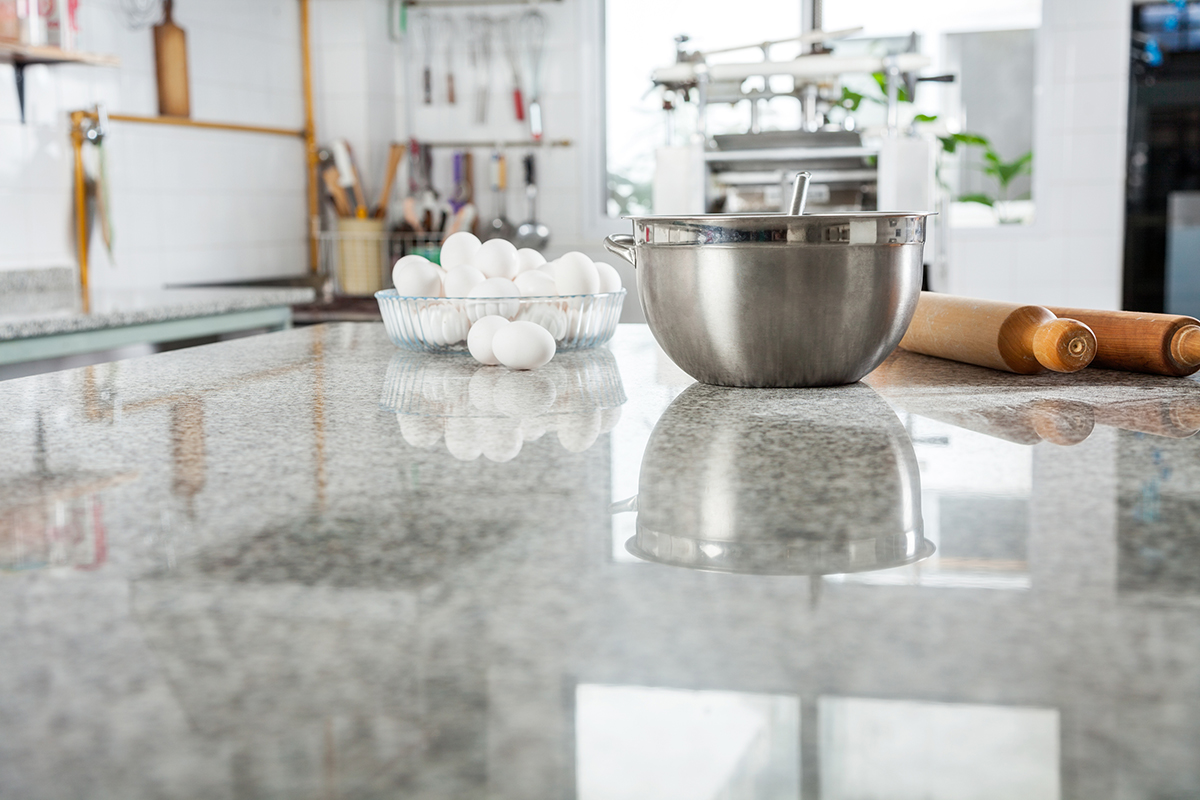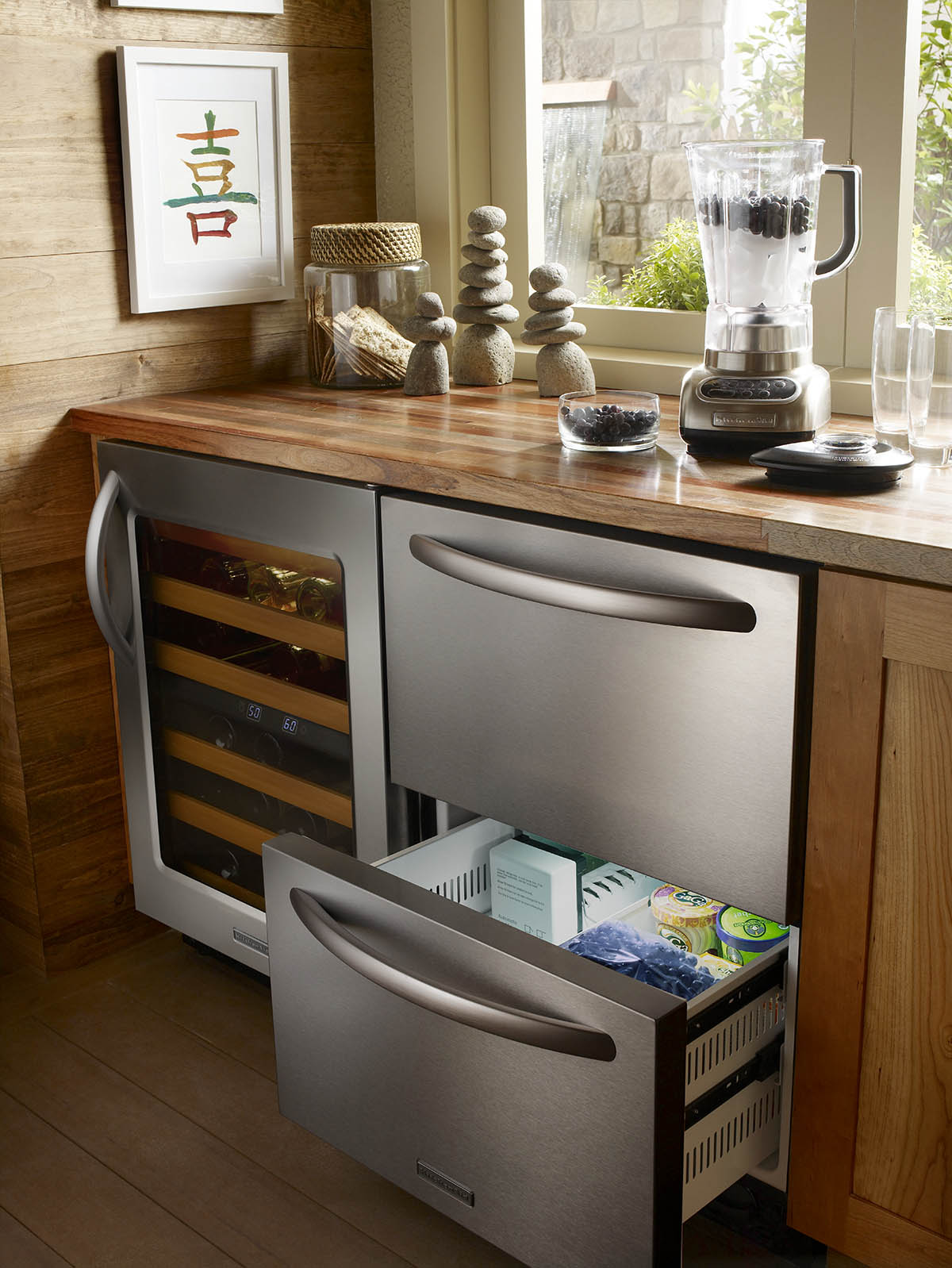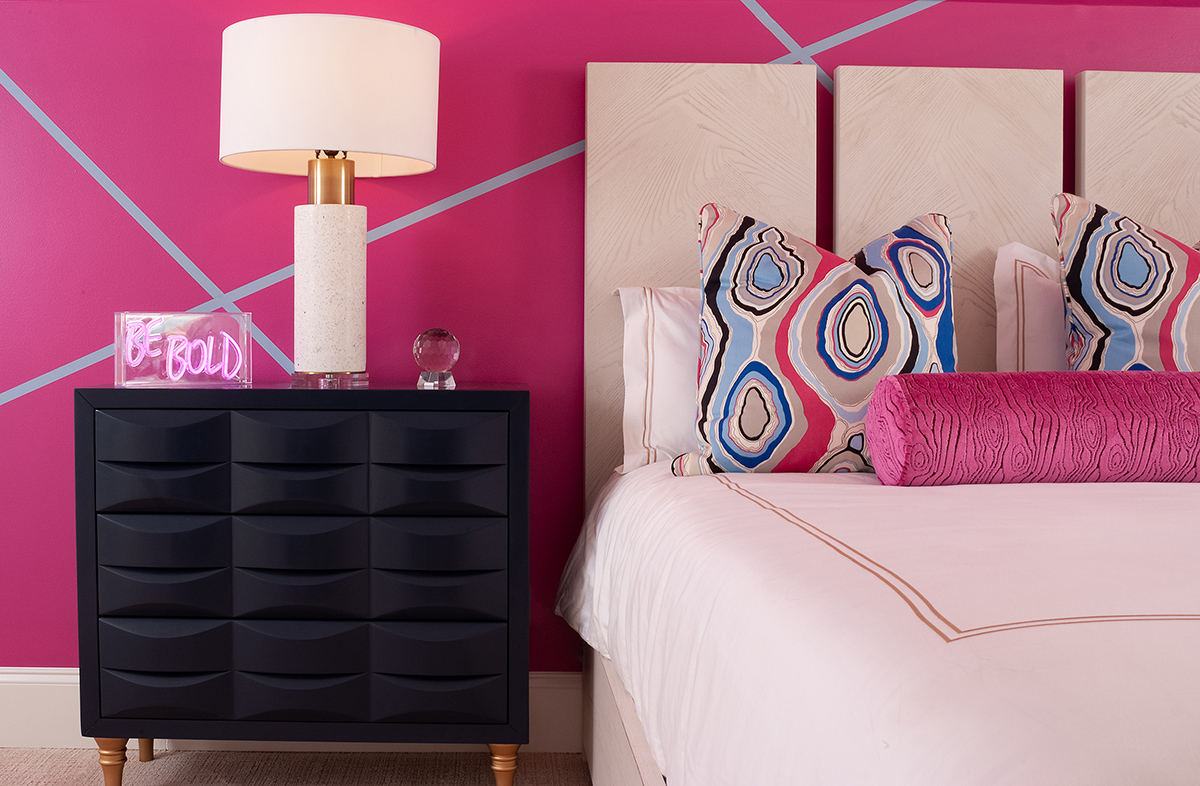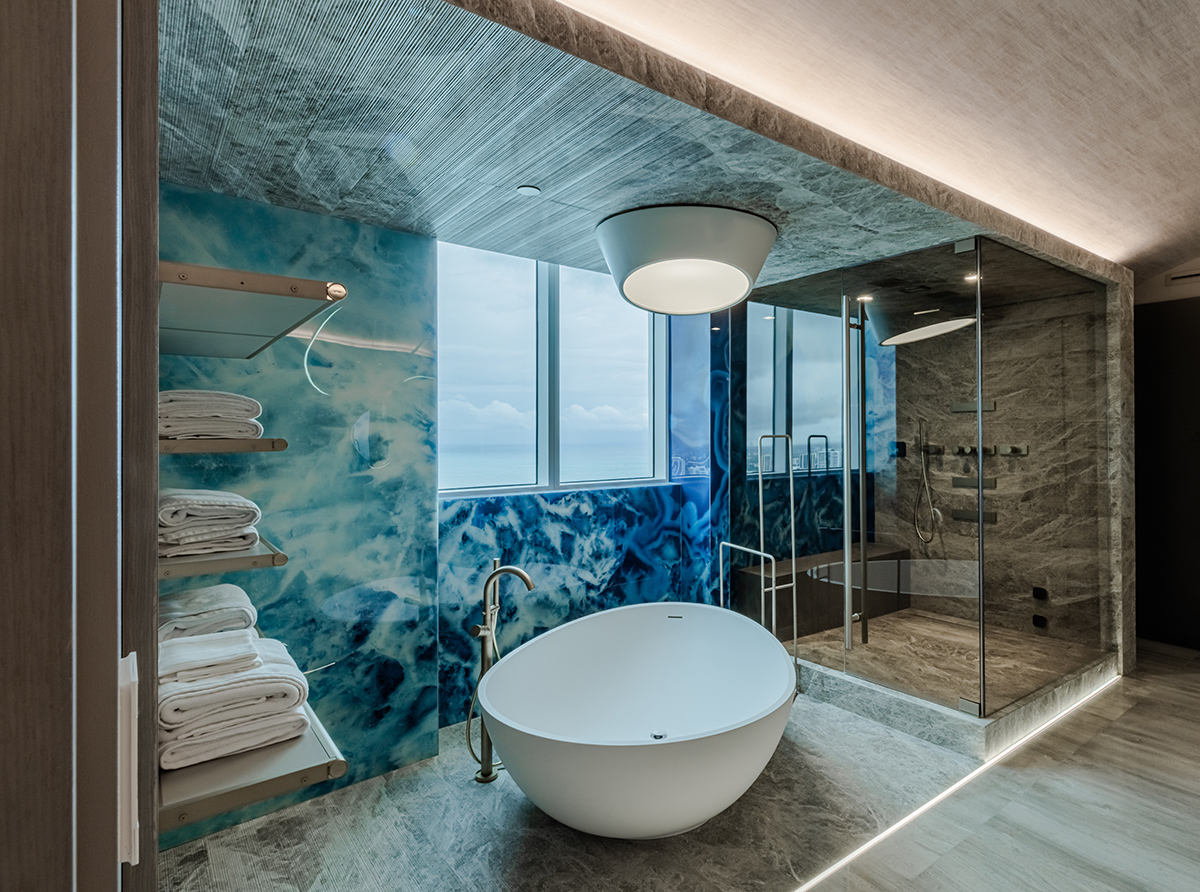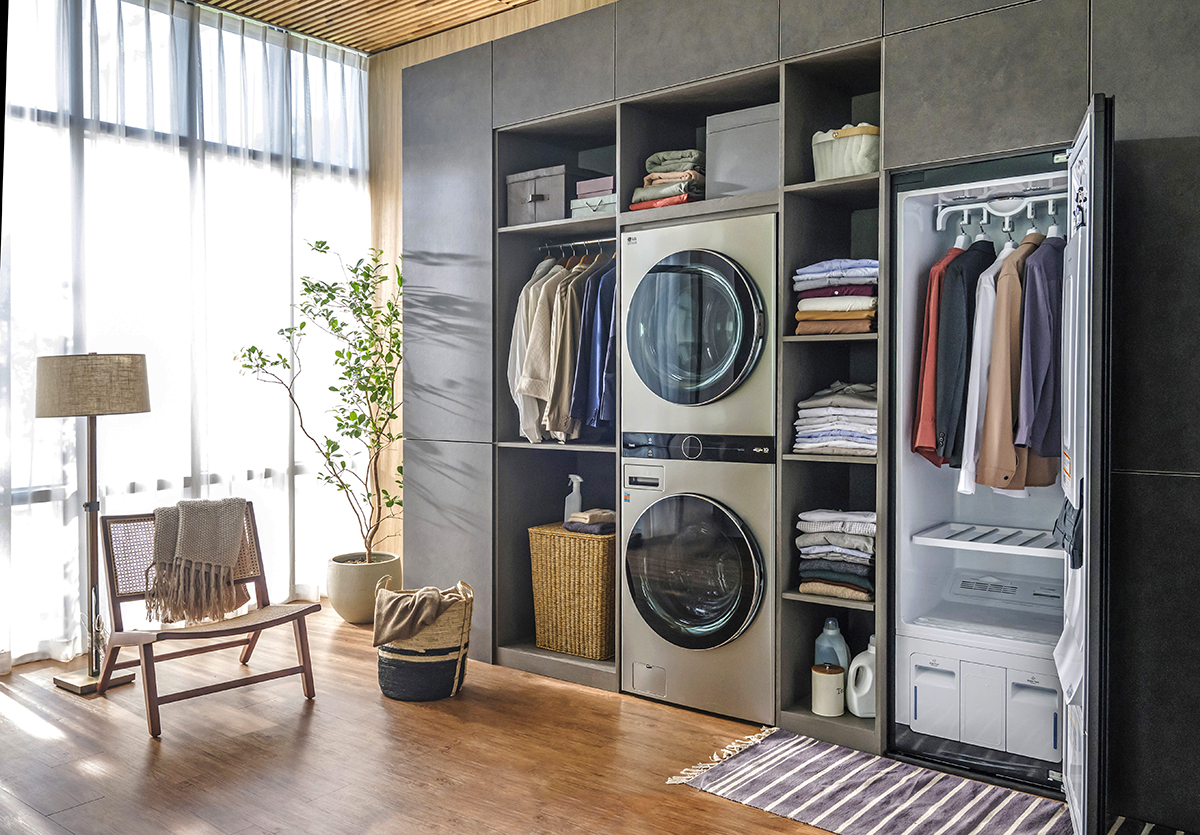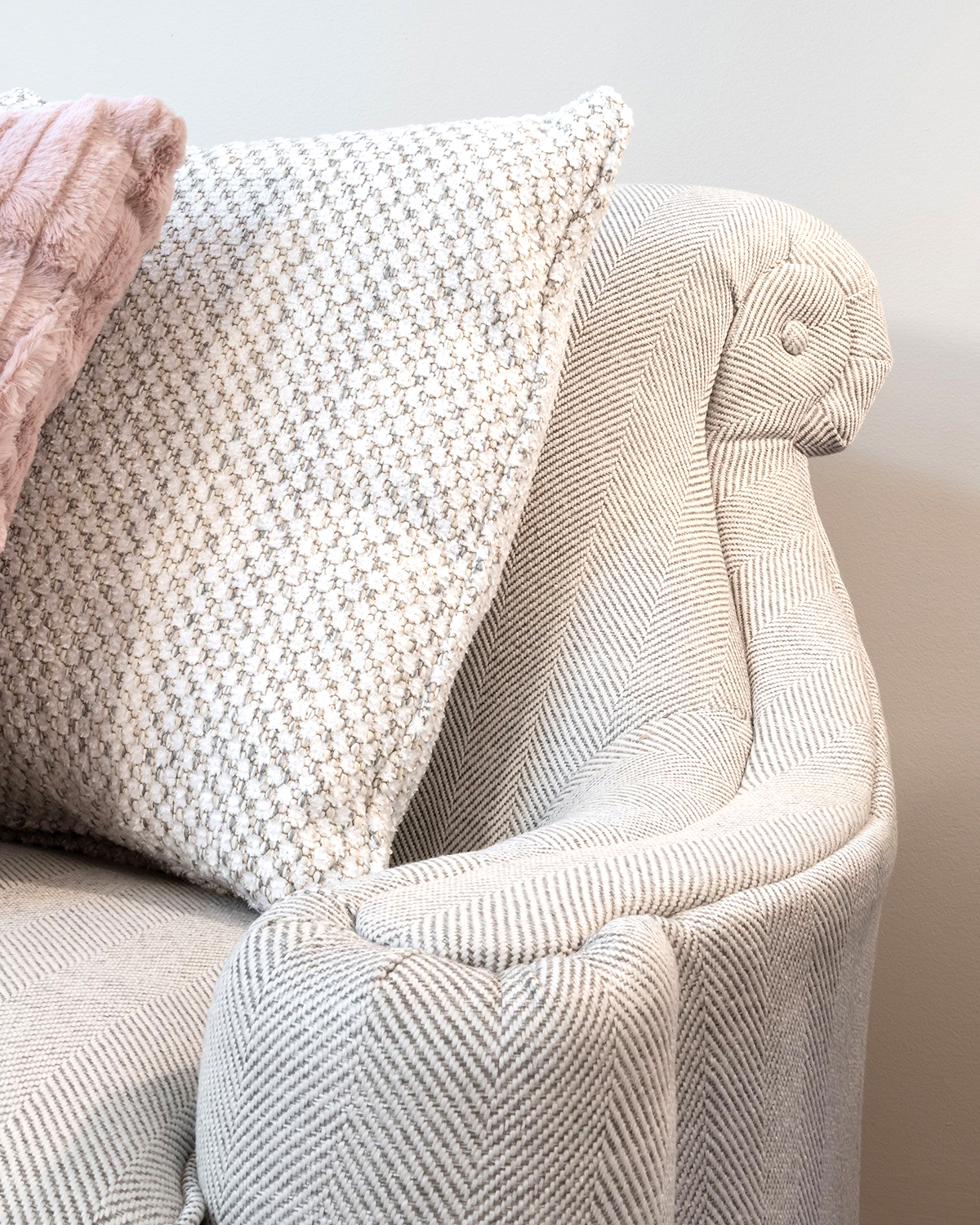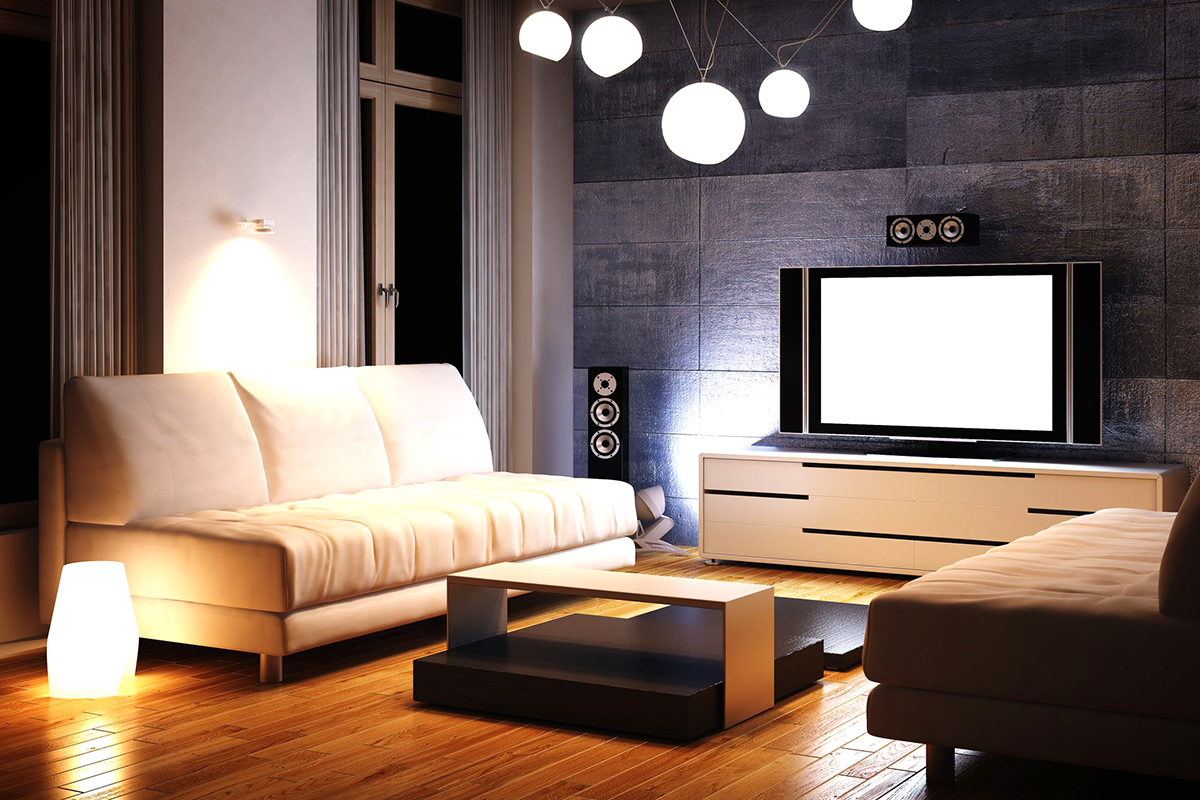WRITER | JEANINE MATLOW
Homeowners expect a lot from their countertops, whether in a butler’s pantry, a kitchen island, or a bathroom vanity. With so many countertop materials available today, it helps to know some pros and cons of each before purchasing one of them.
For Christine Ramaekers, CKD, VP of MainStreet Design Build in Birmingham, quartz has been the most popular pick for recent projects. This manmade nonporous material that contains mostly natural stone can go anywhere in the home, and it’s easy to clean and easy to fabricate.
“With quartz, you get a more uniform look,” says Ramaekers. Color variations include the white, cream, and gray tones that are currently in demand, while satin, matte, and leathered looks are among the finishes. Higher-end styles can approach the price range for quartzite and more closely resemble natural stone. Quality quartz is durable, low-maintenance, and rarely stains.
Though granite is a natural stone, there are similarities. While some granite can be more affordable, other styles have a higher price point. Quartz may be hard to fracture or crack, but it cannot handle heat. While granite typically can, it can sustain damage in some cases, she says.
For more color and variation, some people do a quartz island and granite perimeter when they want to be a little more adventurous, says Ramaekers, who has seen a slight surge in granite for those who want more random patterns.
Any natural stone that’s sealed will eventually have to be resealed.
As Ramaekers explains, “There is not one right product for every situation. You have to decide what’s best. It’s not a one-size-fits-all solution.” Considerations include price, style, and usage, such as a bar area where you plan to serve red wine.
For higher-end kitchens, quartzite has been a sought-after product. “It has a beautiful depth to it and character like marble,” she says. Starting at a higher price point than other options puts it on the luxury end of the spectrum.
Porcelain may be less common for countertops, but it’s very high-end and may be the closest look to marble. “The finishes are phenomenal, but it’s a thin material that’s much more difficult to fabricate,” she says. You need a really good fabricator, and the amount of time required will drive up the cost. The good news is that it’s heat and stain-resistant.
Waterfall edges have been trending in kitchens and bathrooms along with thicker countertops that conjure images of marble. Since marble is porous and soft, Ramaekers often steers clients away from it for kitchen counters. “We send a sample home with them to play with for four to five days,” she says. “If you’re a big cook, a coffee drinker, or you like red wine, you might be better off with quartzite or porcelain for the closest resemblance.”
Like marble, soapstone countertops are another high-end option. Though they will show wear, the darker tones appeal to certain homeowners.
For added warmth, exotic woods like cherry offer a distinctive look despite their wear and tear. Since they should be treated and be nice and thick, exotic woods can be in the same price range as granite and stone. Walnut has been especially popular, along with live-edge countertops. “If you’re looking for that feel in the kitchen, you might pick just one spot, like an island,” says Ramaekers.
Walk-in pantries can better accommodate woods like butcher block, a more affordable surface that won’t get as much wear in that type of environment. “We do a lot of countertops in those areas,” she says. “They’re like secondary kitchens, and it holds up really well in there.” For laundry rooms and mudrooms, quartz tops the list for cost and style, with that light and bright white people like in those locations.
When considering countertops, Ramaekers suggests creating an idea board to discuss with a professional you trust. Make sure you get a quality product, expert tradespeople and fabricators, and know your budget realistically, including overage. Lastly, you can get a good feel for how your space will look with a 3D rendering.


